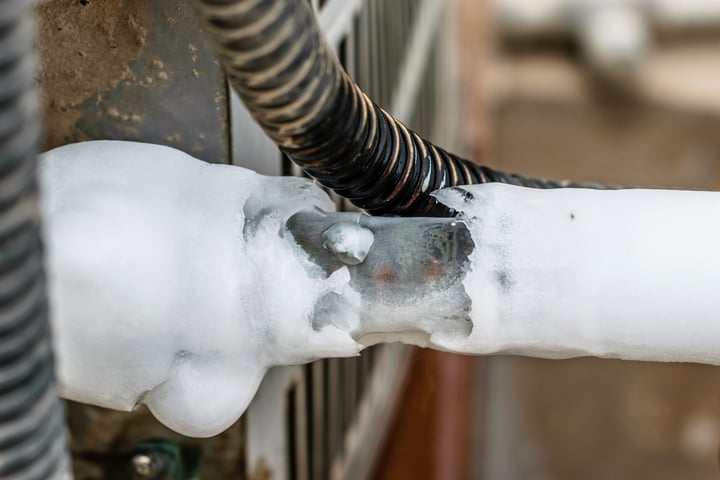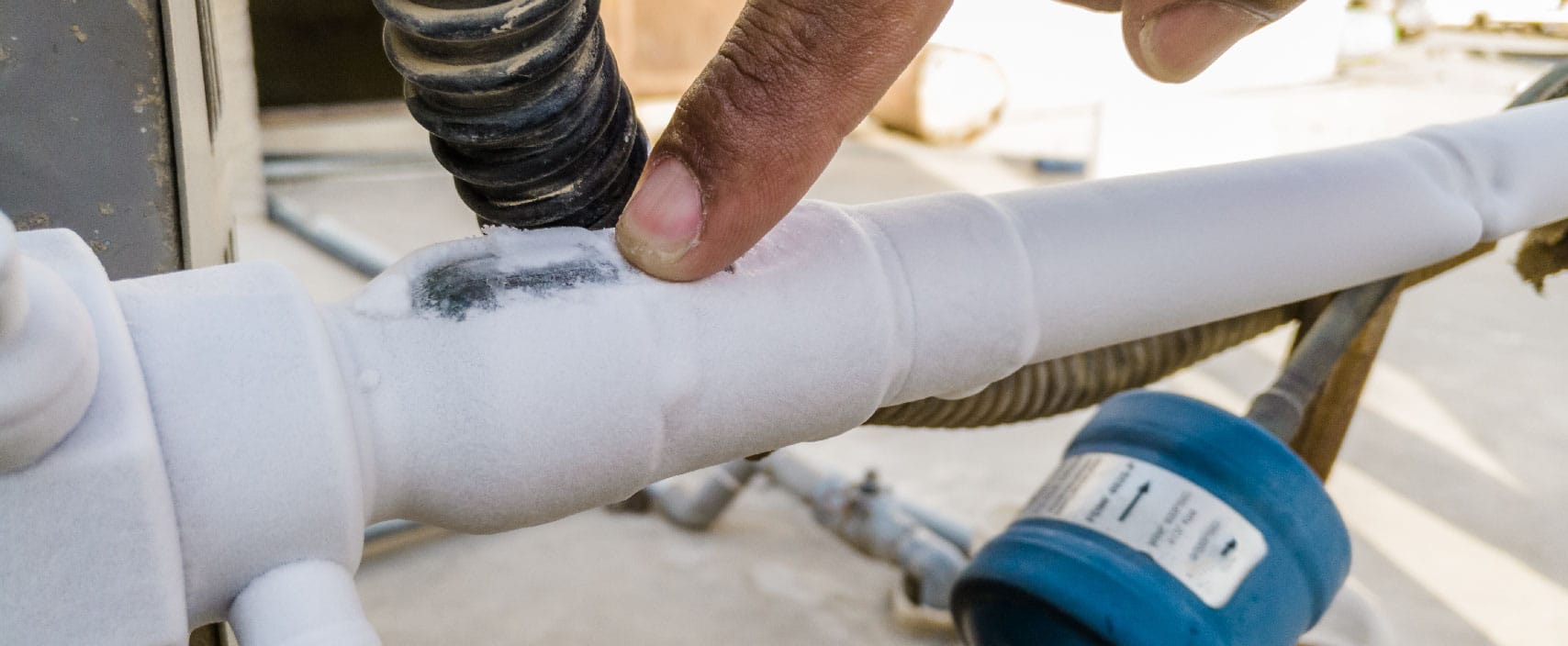Just about every person is bound to have their own unique piece of advice on the subject of Have a Frozen AC Line? Here’s How to Fix It.

Intro
Uncovering that your air conditioning pipeline is iced up can be worrying, especially during hot summer months when you depend on your air conditioner the most. Understanding what to do in such a situation is important to avoid additional damages to your air conditioning system and guarantee your convenience inside your home.
Comprehending the Causes
Several variables can add to the freezing of an AC pipeline. Comprehending these reasons can help you attend to the concern effectively.
Absence of Airflow
One typical root cause of an icy air conditioning pipeline is inadequate air movement. When the airflow over the evaporator coil is limited, it can trigger the coil to drop below freezing temperature level, resulting in ice development on the pipeline.
Low Refrigerant Levels
Inadequate cooling agent levels in your air conditioner system can also lead to an icy pipe. Low cooling agent levels can create the pressure in the system to drop, resulting in the freezing of dampness on the evaporator coil.
Winter Conditions
In cooler environments, freezing temperature levels outside can add to the cold of air conditioner pipelines. If your air conditioner device is not correctly shielded or if there are leaks in the ductwork, cool air can infiltrate the system, triggering the pipeline to ice up.
Dirty Air Filters
Dirty or blocked air filters can limit airflow in your air conditioner system, bring about various concerns, consisting of an icy pipeline. It's important to change or cleanse your air filters on a regular basis to make certain correct airflow and prevent ice build-up.
Indications of a Frozen Air Conditioning Pipe
Acknowledging the indicators of an icy AC pipe is crucial for prompt activity.
Reduced Airflow
If you notice a significant decrease in air movement from your vents, it could show a frozen pipeline.
Ice Buildup on the Pipe
Visible ice accumulation on the cooling agent line or the evaporator coil is a clear indication of a frozen air conditioning pipeline.
Weird Sounds from the Unit
Unusual sounds, such as hissing or gurgling, coming from your air conditioner system can indicate that there's ice present on the pipe.
Immediate Actions to Take
When faced with an icy air conditioning pipe, it's essential to act promptly to stop additional damage to your air conditioning system.
Turning off the AC
The very first step is to shut off your air conditioner to avoid the system from running and exacerbating the problem.
Looking for Blockages
Evaluate the area around the interior device for any type of obstructions that might be obstructing airflow, such as furniture or drapes.
Defrosting the Pipe
You can utilize gentle methods like positioning towels soaked in cozy water around the frozen pipe to aid thaw it gradually.
Safety nets
Taking preventive measures can aid stay clear of future events of a frozen AC pipe.
Normal Maintenance Checks
Arrange normal maintenance contact a professional HVAC professional to make sure that your air conditioner system is running effectively.
Changing Air Filters
Regularly replace or cleanse your air filters to stop airflow constraints and keep ideal performance.
Protecting Exposed Pipes
If your AC pipes are revealed to cold temperature levels, consider insulating them to avoid cold during winter months.
Seeking Professional Help
If DIY methods stop working to fix the concern or if you're unclear concerning how to proceed, it's best to seek aid from a qualified HVAC professional.
When DIY Methods Fail
If your attempts to thaw the pipe or address other concerns are not successful, it's time to employ a professional.
Importance of Hiring a Professional HVAC Technician
A licensed HVAC service technician has the proficiency and tools required to detect and repair problems with your a/c system safely and efficiently.
Conclusion
Dealing with an icy air conditioning pipeline can be a frustrating experience, yet understanding exactly how to react can aid lessen damage and bring back convenience to your home. By comprehending the causes, identifying the indications, and taking punctual activity, you can effectively address the issue and stop future events.
What to Do If Your AC Line Is Frozen
Make Sure All Supply and Return Air Vents Are Open
If you notice problems with airflow, the first thing you should do is check your supply and return vents. Supply vents distribute clean, conditioned air throughout your home. As this air becomes stale, it’s pulled into the return vent, where it’s reconditioned before being sent back out through the supply vent.
When these vents are closed, air won’t flow in the home. Before examining your AC, check the vents in every room and ensure they’re all open.
Check for a Dirty Air Filter
Another possible cause of limited airflow is a dirty air filter. Your air conditioner’s filters catch elements you don’t want to breathe in, such as dirt and dust. Over time, filters can become clogged, ultimately blocking air from flowing in and out. The lack of airflow can then cause the entire coil to freeze and will completely restrict any air from moving through it. The AC may need to be powered off for one to two days to allow the coil to thaw after replacing the filter to allow proper functioning of the unit. This debris can also accumulate on your AC’s evaporator coil, requiring a more serious repair. In general, air filters should be cleaned regularly (about every two weeks).
Assess Your Outdoor Unit
In addition to checking your AC, assessing the outdoor unit is a good idea. Also known as the condensing unit, it works with your interior unit to release heat outside. An issue with the outdoor unit can result in rising internal temperatures.
Overgrown Shrubs or Clogged Leaves
From leaves and twigs to shrubs and debris, there’s no shortage of outdoor elements that can accumulate around your condensing unit. When these elements get lodged inside the unit, they can block airflow. Fortunately, removing the blockage can solve the problem.
Sounds of a Broken Fan
Shrubs and leaves aren’t the only things that can impede your outdoor unit’s airflow. If the fan is broken, the unit won’t be able to properly get rid of heat — which means the internal temperature won’t go down. First, make sure the fan is spinning. If it is, check for the following sounds of a broken fan:
Buzzing Rattling Screeching Hissing Clicking Preventative Measures
Nobody wants to deal with a frozen AC line. In addition to causing problems with your air conditioner, they require professional repairs. On the bright side, there are preventative measures you can take to help ensure this issue doesn’t arise in the first place.
https://www.coopergreenteam.com/blog/what-to-do-if-ac-line-frozen

I discovered that blog posting on Air Conditioner Frozen? How To Fix your Frozen AC Line when surfing the internet. Appreciated our write-up? Please share it. Let another person check it out. Kudos for your time. Come back soon.
Click Here